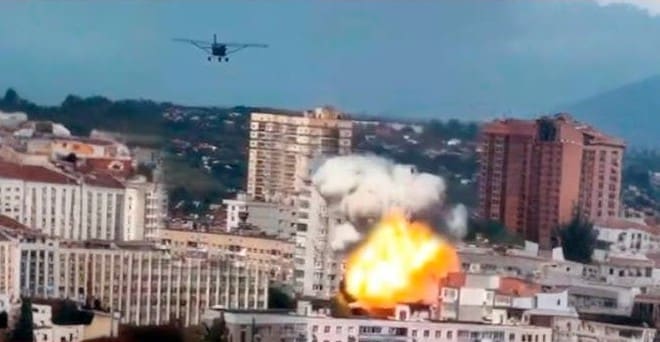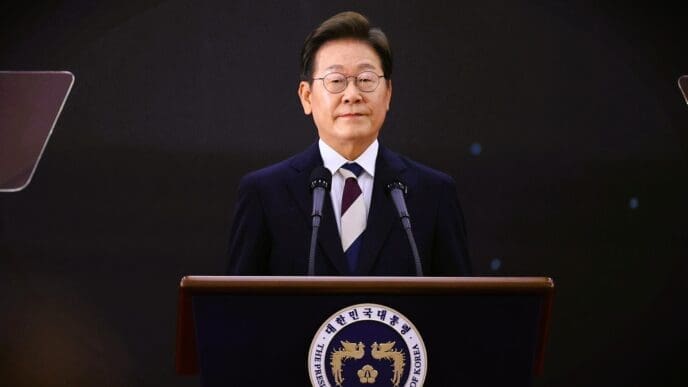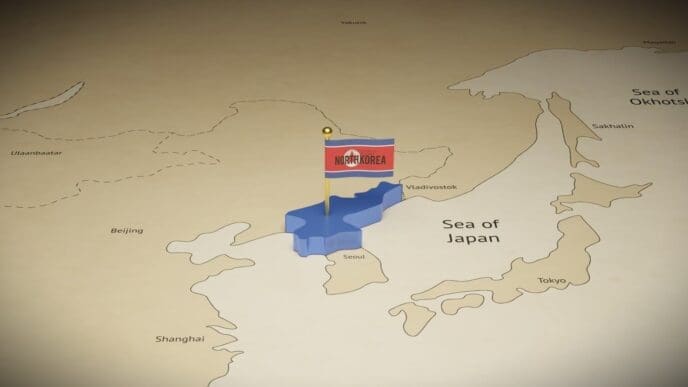According to a Pentagon report released Wednesday, China has been expanding its nuclear capabilities, escalating military pressure on Taiwan, and strengthening its ties with Russia over the past year. These actions are seen as intensifying key areas of conflict with the United States.
The report also highlights a series of corruption allegations within China’s Central Military Commission, which oversees the People’s Liberation Army (PLA). These issues are reportedly hindering Beijing’s military growth and could impede its modernization efforts.
A senior defense official, speaking on the condition of anonymity, described the situation as a “mixed bag.” While there has been advancement in certain programs, China has regressed in others. The official cautioned that Beijing is working to develop a more varied and technologically advanced nuclear arsenal. While the number of nuclear warheads is consistently increasing, China is expanding its targeting capabilities.
As a result, Beijing will be able to engage a wider range of targets, potentially inflict greater damage, and present more options for multiple counterstrikes. The U.S. is calling for greater transparency regarding China’s nuclear ambitions, reiterating its commitment to defending allies and taking necessary action in response to any threats.
The report, which is part of the annual U.S. assessment of China’s military strength mandated by Congress, states that as of May, China possessed over 600 operational nuclear warheads, with projections suggesting this number could exceed 1,000 by 2030.
In response, the Chinese Embassy asserted that China adheres to a nuclear strategy of self-defense, follows a no-first-use policy, and maintains its nuclear capabilities at a minimum level necessary for national security. Liu Pengyu, the embassy spokesman, criticized the Pentagon’s reports as reflective of Cold War thinking and a zero-sum mentality, which China strongly opposes.
The Biden administration aims to maintain a balanced approach with China, bolstering U.S. military presence in the Asia-Pacific region to prepare for potential challenges from Beijing while also promoting increased diplomatic and military dialogue between the two nations.
This increase in communication has correlated with a reduction in aggressive and risky intercepts of U.S. aircraft by Chinese forces since late 2023, compared to the previous two years. However, the Chinese military still conducts what the U.S. considers unsafe operations near American and allied forces.
The Pentagon’s national defense strategy identifies China as the primary security challenge for the U.S., influencing military readiness and future organizational structure. Corruption within the PLA has resulted in the removal of at least 15 high-ranking officials during a significant overhaul of China’s defense leadership.
The report notes that this wave of corruption permeates every branch of the PLA and may have shaken the confidence of the Beijing leadership. Recently, former Defense Minister Li Shangfu and his predecessor Wei Fenghe were expelled from the Communist Party over corruption charges. Another senior official, Miao Hua, was suspended and placed under investigation last month by China’s Defense Ministry.
The U.S. report indicates a sustained increase in China’s military presence around Taiwan, the self-governing island that Beijing claims as its own. It highlighted a notable uptick in Chinese naval activity in the region, including increased incursions into Taiwan’s air defense identification zone and significant military exercises.
Last week, a large mobilization of Chinese navy and coast guard vessels around Taiwan raised alarms, prompting Taiwanese officials to suggest that China may be simulating a blockade. Reports indicated that up to 90 ships were involved in maneuvers that Taiwan described as two strategic walls to assert control over the waters.
Taiwan has been separated from communist China since 1949 and has consistently rejected Beijing’s demands for unification, with China asserting it will use force if necessary. Chinese leaders have indicated they aim to prepare for a potential takeover by 2027 and have urged Washington not to interfere in what they consider an internal matter.
Under U.S. law, the United States is obliged to assist Taiwan in its defense, providing weapons and technology to deter any invasion attempts. The island democracy has long been a focal point of tension between Washington and Beijing and is viewed as the most likely flashpoint for a potential catastrophic conflict between the U.S. and China.
Broadly, the report concludes that while the PLA is pursuing military enhancement, it has made uneven progress toward its modernization goals set for 2027. One area of particular growth is in unmanned aerial systems, which officials indicate are rapidly nearing U.S. standards.
Regarding its ties with Russia, the report suggests that China has supported Moscow’s war efforts in Ukraine, supplying dual-use items essential to Russia’s military industry. Dual-use items can serve both civilian and military functions.
Source: APNews.com













